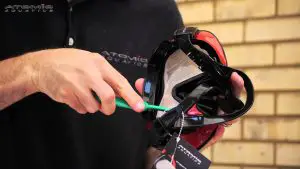Though scuba diving is an extremely fun sport, there are a lot of things that you need to know and prepare before you can even step foot into the water. First of all, I’m sure you are all aware of just how much equipment you need even for the more basic scuba diving excursion. This equipment is crucial to ensuring your safety when you are scuba diving, after all, the water really isn’t the natural habitat for humans, and so we must take steps to protect ourselves in this unfamiliar environment.
In terms of knowledge, there is a lot that you need to learn about scuba diving, such as how to properly ascend and how to get your sea legs. But the most important knowledge you can have as an avid scuba diver is how to care for the equipment that keeps you safe. If you already have experience in the world of scuba diving, you will know just how expensive scuba equipment can be. Along with the fact that the equipment’s sole purpose is to ensure your own safety, it is key that you keep the equipment well maintained. This can be done by regularly cleaning your equipment and also making sure all of it is properly stored.
However, some people don’t know that not all equipment is good to go as soon as it is bought. Many of the equipment you use when you scuba dive requires extensive testing, which may seem obvious given how a lot of what you can buy may have faults. What is a lot less known is that some of the items that you will use when scuba diving actually require pretreatment.
What is a dive mask?
A dive mask can come in several forms, such as a head mask and a full mask, and it is arguably one of the most important pieces of equipment that you will use when scuba diving. You may object to that statement, believing instead that your oxygen tank is the most important piece of equipment that you will use when you are underwater. Yes, an oxygen tank provides the much-needed oxygen to survive underwater- but what good is a dive mask if you can’t see the space you are exploring?
How does a dive mask work

A dive mask creates a pocket of air between yourself and the water that you are submerged in. There is a reason that very few people choose to dive without masks, and that is because, without them, there is no way for the light to refract, which means their vision would be blurry, which is the last thing that you want when you are under the surface of the water.
If you are able to purchase a full-face dive mask, then the dive mask will also help supply you with oxygen when you are diving, which many people also believe helps with equalizing. If this is something that you are interested in, there are plenty of places where you can look to find the best full face scuba masks that will fit your needs.
Why do you need to pretreat a mask?
During the manufacturing process of a lot of face masks, a thin film of silicone can often accumulate in the mask lens. This can be extremely inconvenient for divers, as it produces a fog on the mask, which can make it difficult to see during the diving process. Silicone is resistant to most cleaning solutions, which can make it extremely annoying, especially when you haven’t noticed it before entering the water.
Your vision is also arguably your most valuable tool when you are scuba diving. The entire reason that people choose to take up scuba diving as a sport is to explore the beauty that the ocean has to offer. The ocean can also be an extremely dangerous place. There is a long list of potential accidents that could occur when you are in the ocean, after all, it really is an unpredictable habitat. Not only this, but there is also a long line of predators that you could be exposed to when you are under the surface, so it is important that you have a clear vision.
How do you treat a new dive mask?

As I have just pointed out, silicone can be extremely annoying to clean. Because of this, there are special techniques that you can use to make sure that you have properly cleaned the mask and got rid of any fog. There are also different cleaning techniques depending on whether or not you are using glass or plastic lenses.
First of all, you need to use an abrasive product to try and pick up the silicone film. A lot of people actually use something as common as toothpaste when it comes to glass lenses. You shouldn’t use this on plastic lenses as this could cause scratching. However, if you really want to use toothpaste to treat the silicone film, apply it with a soft cloth. Also, make sure you do this step when the lens is dry, as it won’t be as effective on a wet lens.
Once you have thoroughly scrubbed the mask with your toothpaste, you should immediately rinse the mask. This may take a long time as you want to ensure that all of the paste that you have used doesn’t leave a film of its own. Again, when trying to remove this, rinsing it under the water won’t be enough. You will need to take a sponge or washcloth to really pick up any excess.
